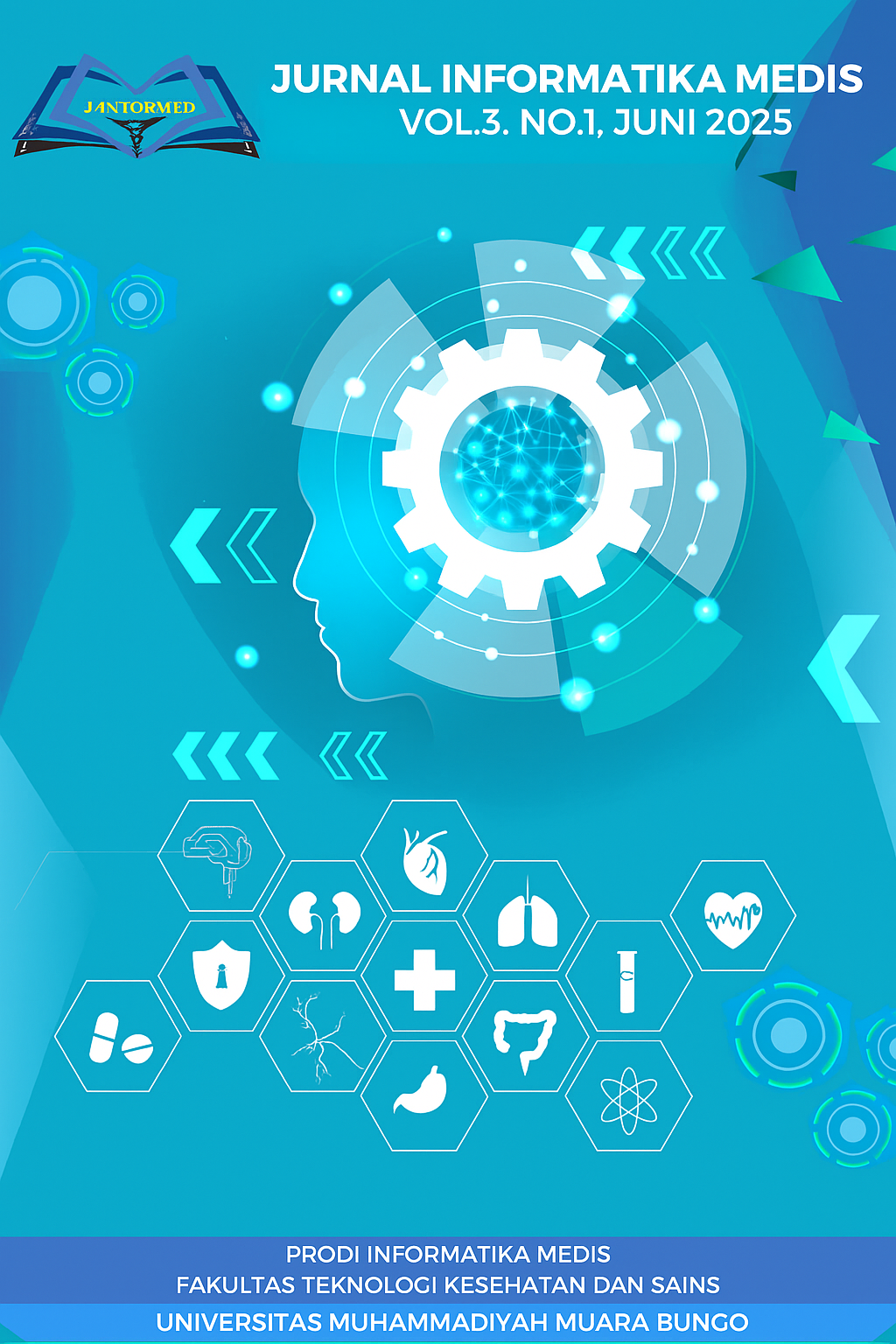STUDI PENGGUNAAN ANTIHIPERTENSI PADA PASIEN PREEKLAMPSIA DI RUMAH SAKIT “X”
Abstrak
Preeclampsia is a complication of pregnancy occurring after 20 weeks of gestation, characterized by elevated blood pressure accompanied by proteinuria. The aim of this study was to identify the patient characteristics, antihypertension usage profile, and the occurrence of Drug Related Problems (DRPs) in preeclampsia patients admitted to Hospital “X” during the period of January to December 2023. This observational study was conducted retrospectively using purposive sampling for data collection. The results obtained from 75 patients showed that the majority were aged 26–35 years (49.3%), with parity P0 (42.67%), primigravida pregnancy status (G1) (40%), last education level at senior high school (46.67%), no history of hypertension (74.67%), no history of preeclampsia (94.67%), and obese BMI (49.33%). The preeclampsia patients based on risk factors were dominated by those with parity P0 (first delivery), totaling 32 patients (36.55%). Blood pressure readings above 160 mmHg were found in 76% of patients, and proteinuria at 2+ was observed in 41.3%. The most commonly used antihypertension medication was single-agent nifedipine (81.33%), while the most frequently used non- antihypertension drug was 40% magnesium sulfate (MgSO4) (82.66%). The incidence of DRPs included 14 cases (18.33%) of drugs without indication, 13 cases (17.32%) of indication without drug therapy, and moderate drug interactions between dexamethasone and furosemide in 20 patients (26.66%). The potential adverse drug reactions observed were minor (20%), moderate (80%), and none were major (0%). This study is expected to serve as an informative reference regarding the use of antihypertension therapy in preeclampsia patients.
Kata kunci: Preeclampsia, Antihypertension, Retrospectiv, Problem, Drug
Referensi
Arianjarrani, V., & Mutmainah, N. (2019). Kajian Drug Related Problems (DRPs) Pada Ibu Hamil Dengan Preeklampsia/Eklampsia Di Instalasi Rawat Inap RSUD Dr.
Armadani, D. K. (2019). Hubungan primigravida dengan kejadian preeklampsia pada ibu hamil di Puskesmas Jagir Surabaya. Midwifery Journal, 4(2), 79-82.
Chambali, Miftachul Ainin, et al, 2019, Analisis Efektivitas Biaya Penggunaan Antihipertensi pada Pasien Preeklampsia di RSUD Abdul Wahab Sjahranie Periode 2018, Proceeding Mulawarman Pharmaceuticals Conferences, 10, 32 – 37.
Djaga, Williamson, et al, 2020, Faktor – Faktor Penyebab Preeklamsia Studi Kasus Rekam Medik di Rumah Sakit Panti Wilasa Citarum Semarang. Jurnal Keperawatan Muhammadiyah, 5(1), 313 – 319.
Ekasari, T dan Natalia MS, 2019, Deteksi Dini Preeklamsi dengan Antenatal Care, Yayasan Ahmar Cendekia Indonesia, Sulawesi Selatan.
Handayani, H., & Sania, W. (2024). Hubungan Faktor Risiko Pre-Eklampsia Terhadap Hasil Pengukuran Tekanan Darah pada Ibu Hamil Trimester II dan III. Journal of Nursing and Midwifery Sciences, 3(October), 1- 15.
POGI, 2016, Pedoman Nasional Pelayanan Kedokteran Diagnosis dan Tata Laksana Preeklampsia, Perkumpulan Obstetri dan Ginekologi Indonesia, Jakarta.
[PCNE] Pharmaceutical Care Network Europe Foundation. 2006. Classification. for Drug Related Problems. The PCNE Classification V 5.01 hlm 1-4
Purwanti, N. U. (2018). Profil Penggunaan Antihipertensi pada Pasien Pre-eklampsia di Rumah Sakit Umum Yarsi Pontianak Tahun 2018. Jurnal Mahasiswa Farmasi Fakultas Kedokteran UNTAN, 4(1).
Sudarman, dkk, 2021, Faktor-faktor yang Berhubungan dengan Terjadinya Preeklampsia, e-CliniC 9(1), 68 – 80.

| Keywords | : | |
| Galleys | : | |
| Diterbitkan | : |
2025-06-30
|
| Cara Mengutip | : |
Goreti, M., & Victoria Yulita Fitriani. (2025). STUDI PENGGUNAAN ANTIHIPERTENSI PADA PASIEN PREEKLAMPSIA DI RUMAH SAKIT “X”. Jurnal Informatika Medis, 3(1), 1–5. https://doi.org/10.52060/im.v3i1.3181
|
| Terbitan | : |
Bagian
Articles
|







